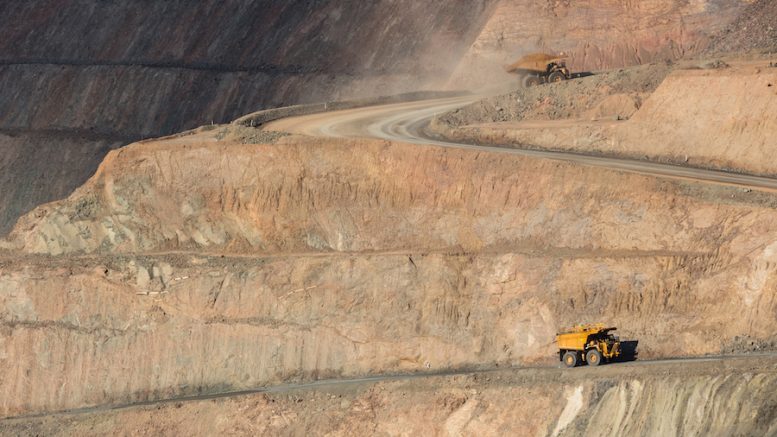With annual financial budgets looming, the end of October is a frightening time in the calendar. This year is especially scary because of the considerable political and financial uncertainty. Soaring inflation, energy supply concerns and exchange rate volatility mean that the macroeconomic environment is weighing on all metals prices, regardless of fundamentals.
Halloween is also upon us, and darker forces than accountants and analysts might be at work. Scotland is to be thanked for a word derived from a mid-18th century term for the evening before All Hallows Day, which is itself an English phrase from the mid-16th century for All Saints Mass Day. Nov. 1 is the day in the liturgical year dedicated to remembering the dead, including saints (hallows), martyrs and all of the departed faithful.
The rituals are easily explained, as humour and ridicule have long been brought to bear in confronting the power of death. Also, because many Christian denominations encouraged abstinence from meat on All Hallows Eve, the tradition developed of eating certain foods, including apples and pancakes.
In England, Halloween is closely followed by Guy Fawkes Night.
In 1605, a group of Catholics plotted to blow up the House of Lords during the state opening of Parliament on Nov. 5. The plan was to assassinate the Protestant King James I and replace him with his nine-year-old daughter, Princess Elizabeth Stuart (1596-1662).
Guy Fawkes (1570-1606), who had 10 years of military experience fighting for the Spanish during the 80-year Dutch revolt, was given charge of the explosives, but was discovered after an anonymous letter exposed the conspiracy. Although not the leader, Fawkes became synonymous with the Gunpowder Plot, the failure of which is popularly commemorated annually with bonfires and fireworks. Fawkes died before he could be hung, drawn and quartered.
For the mining industry, it’s not just ghosts and papist plots to be worried about. According to the latest price forecasts from S&P Global Market Intelligence (SPGMI), the consensus amongst commodity analysts is for the price of most metals to average less this year and next than they did in 2021.
The only exceptions amongst the major metals are gold (which averaged only US$1,799 per oz. last year), aluminum, cobalt, nickel, zinc and uranium. The latter is the big winner from the energy crisis caused by Russia’s invasion of Ukraine, with a consensus average price of over US$48 per lb. this year and almost US$54 in 2023, compared with an average of barely US$36 per lb. in 2021.
Despite this gloomy scenario, SPGMI reports that global nonferrous exploration expenditure this year is likely to be up 16%, compared with annual budgets last year, to US$13 billion.
Exploration budgets for almost all commodities have increased, with gold and ‘green’ metals (including copper, lithium and nickel) leading the way. SPGMI notes that budget allocations across all stages of exploration have posted increases, although companies are still focusing mostly on exploration at, and around, existing mine sites.
Nevertheless, with metals prices and financings having fallen during the second half of 2022, it seems likely that exploration budgets for next year will decline. This likely restriction on exploration spending has already been seen in capital expenditure patterns and equipment budgets.
By some measures, capex by commodity producers is at an all-time low, and barely one-quarter what it was 10 years ago. At the end of September, Otavio Costa (a portfolio manager at Crescat Capital) wrote that capex for commodity producers has “just hit new lows when adjusted for GDP levels,” and observed “Fed tightening and capital availability drying up certainly doesn’t help.”
Commodity producers with market capitalization of over US$1 billion (on U.S. and Canadian stock exchanges) currently have barely US$100 billion of capex (aggregate past 12 months, based on Bloomberg data). This contrasts with over US$450 billion in 2012-14 and 2008 (all adjusted for GDP).
As Costa noted, this capex data suggests “supply constraints are likely to stay with us for a long time.” It is also reflected in equipment orders. The Pennsylvania-based market research company Parker Bay recently reported that unit shipments of mining equipment increased 1.7% in the three months to end of June. However, the mix shifted to smaller, lower value products such that second-quarter deliveries actually declined 7.4% overall compared with valuations in the first quarter.
Geographically, Parker Bay reports that the most significant change was for mines in Russia/CIS. The region has surged for several years with deliveries second only to Australasia during the expansion that began in late 2020. In this year’s second quarter, however, this changed dramatically, with shipments down over 30%, “mostly likely reflecting a myriad of economic dislocations brought on by the war in Ukraine.”
Shipments to Australasian mines likewise declined, but by a more modest 15% (and this followed an extremely strong first quarter, where shipments rose by one-third). Latin America was the third region to decline during the quarter but by only 10%. The other four regions showed increases in quarterly equipment shipments; Africa and Asia were up by 88% and 53% respectively (following very weak first quarter totals), North American mines took deliveries of machines valued at 9% more than in the first quarter (and exhibited a gain of over 30% compared with year-ago deliveries), and equipment shipments to Europe and the Middle East were up 16%.
Parker Bay’s Surface Mining Equipment index (in real dollars) is back below 90, compared with the peak of over 170 a decade ago. It remains to be seen whether the latest results represent the beginning of a market contraction, or merely a pause in a soon to resume expansion. Frightened?




Be the first to comment on "A scary time for everyone as gloomy forecasts for mining and exploration show"